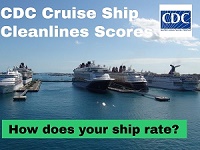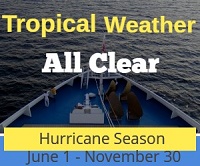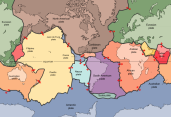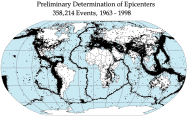Italy Earthquake and Volcano Activity
Things you need to know about cruise ship safety before you leave port
Venice
Get to know our slice of Paradise - located on the SW Coast of Fl.
Attractions
Beaches
Canoe/Kayak
Boat Launches
Boat Charters
Fishing Charter
Fishing Piers
Historical Sites
Golf
Parks
Hotels
Relocate
Venice Map
advice > safety > natural hazards -Italy
Cruise Ship Natural Hazards
Know before you go!
A natural hazard is a threat of a naturally occurring event that will have a negative effect on people or the environment. Many natural hazards are interrelated, e.g. earthquakes can cause tsunamis.
Tsunami Warning Links
Pacific Tsunami Warning Center West Coast & Alaska Tsunami Warning Center
Caribbean Tsunami Warning Program Puerto Rico Seismic Network
Italy Seismic Activity
The country is situated at the meeting point of the Eurasian Plate and the African Plate, leading to considerable seismic and volcanic activity.
Several major earthquake fault lines cross Italy. Principal Italian cities, with the exception of Naples, do not lie near these faults; however, smaller tourist towns, such as Assisi, do lie near faults, and have experienced earthquakes. An earthquake severely damaged the town of L’Aquila in 2009.

There are 14 volcanoes in Italy, three of which are active: Etna, Stromboli and Vesuvius. Vesuvius is the only active volcano in mainland Europe and is most famous for the destruction of Pompeii and Herculanum. Several islands and hills have been created by volcanic activity, and there is still a large active caldera, the Campi Flegrei north-west of Naples.
Mt. Etna, on the eastern tip of the island of Sicily, has been erupting intermittently since 2000. Mt. Vesuvius, located near Naples, is currently capped and not active. Activity at Mt. Vesuvius is monitored by an active seismic network and sensor system, and no recent seismic activity has been recorded. Two of Italy's smaller islands, Stromboli and Vulcano, in the Aeolian Islands north of Sicily, also have active volcanoes with lava flows.
Mt. Vesuvius
Mount Vesuvius (Italian: Monte Vesuvio) is a stratovolcano in the Gulf of Naples, Italy, about 5.6 miles east of Naples and a short distance from the shore. It is the only volcano on the European mainland to have erupted within the last hundred years. Mount Vesuvius is best known for its eruption in AD 79 that led to the burying and destruction of the Roman cities of Pompeii and Herculaneum. They were never rebuilt, although surviving townspeople and probably looters did undertake extensive salvage work after the destructions. The towns' locations were eventually forgotten until their accidental rediscovery in the 18th century. The volcano is closely monitored by the Osservatorio Vesuvio in Naples. Currently no magma has been detected within 6.2 miles of the surface, and so the volcano is classified by the Observatory as at a Basic or Green Level.
The area around Vesuvius was officially declared a national park on 5 June 1995. The summit of Vesuvius is open to visitors and there is a small network of paths around the mountain that are maintained by the park authorities on weekends. There is access by road to within 660 ft. of the summit (measured vertically), but thereafter access is on foot only. There is a spiral walkway around the mountain from the road to the crater.
Mt. Etna
Mount Etna is an active stratovolcano on the east coast of Sicily, close to Messina and Catania. It is the highest mountain in Italy south of the Alps. Etna covers an area of 459 sq. miles with a basal circumference of 87 miles. This makes it by far the largest of the three active volcanoes in Italy, being about two and a half times the height of the next largest, Mount Vesuvius. Mount Etna is one of the most active volcanoes in the world and is in an almost constant state of activity. The fertile volcanic soils support extensive agriculture, with vineyards and orchards spread across the lower slopes of the mountain and the broad Plain of Catania to the south. Due to its history of recent activity and nearby population, Mount Etna has been designated a Decade Volcano by the United Nations.
Decade Volcanoes
Sixteen volcanoes (Decade Volcanoes) identified by the International Association of Volcanology and Chemistry of the Earth's Interior (IAVCEI) as being worthy of particular study in light of their history of large, destructive eruptions and proximity to populated areas.
Sicily's Mount Etna, and Naples' Mount Vesuvius.
Maps
USGS Worldwide Tectonic Plates Map
Earthquake epicenters 1963-1998 Map
About Earthquakes
An earthquake (also known as a tremor or temblor) is the result of a sudden release of energy in the Earth's crust that creates seismic waves. Earthquakes are recorded with a seismometer, also known as a seismograph. The moment magnitude (or the related and mostly obsolete Richter magnitude) of an earthquake is conventionally reported, with magnitude 3 or lower earthquakes being mostly imperceptible and magnitude 7 causing serious damage over large areas. Ordinarily, subduction earthquakes under magnitude 7.5 on the Richter scale do not cause tsunamis, although some instances of this have been recorded. Most destructive tsunamis are caused by earthquakes of magnitude 7.5 or more.
About Tsunamis
Anything that rapidly displaces a large volume of water can cause a tsunami. Typically, tsunamis are caused by underwater earthquakes, but landslides, volcanic eruptions, calving icebergs, and (very rarely) meteorite impacts can also generate tsunamis. These types of events can cause large disturbances in the surface of the ocean, and when gravity pulls the water back down, the tsunami is born. The original Japanese term literally translates as "harbor wave."
International Tsunami Information Center (ITIC) - ITIC coordinates the efforts to extend the services of the national tsunami warning system of the United States to the international community in the Pacific basin.
Sources: USGS - Wikipedia - US Library of Congress
Related Links:
Weather Updates
Travel Warnings
Safety Overview
Cruise Ship Fires
Sunken Passenger Ships
Sudden Lists/Rogue Waves
Unclassified Incidents
Coronavirus
Norovirus
Incidents 2012
Incidents 2013
Incidents 2014
Incidents 2015









